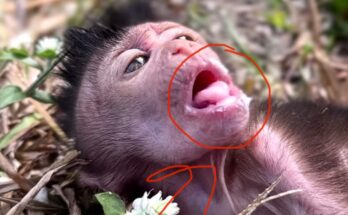Preventing infectious diseases in monkeys is essential not only for protecting wildlife and captive populations but also for safeguarding human health. Because many primate diseases can spread across species, effective prevention strategies combine habitat management, hygiene, veterinary care, and responsible human interaction. Below are the key methods used to reduce infection risks in both wild and captive monkey populations.
1. Ensuring Clean and Hygienic Living Conditions
In sanctuaries, research facilities, and zoos, maintaining a clean environment is one of the most effective defenses against infectious diseases. Enclosures should be disinfected regularly, with waste removed promptly to reduce bacterial and parasitic contamination. Water sources must be clean and refreshed frequently to prevent the spread of waterborne pathogens. Using designated cleaning tools for each enclosure also reduces the risk of cross-contamination between groups.
2. Implementing Routine Veterinary Checkups
Regular health assessments allow early detection of diseases before they spread. Veterinarians can perform screenings for parasites, viruses, and bacterial infections, along with monitoring body condition and behavior. Vaccination programs—where appropriate and approved—provide protection against common primate pathogens. Quarantine measures for new or ill animals are essential, ensuring that infections do not spread to healthy monkeys.
3. Promoting Proper Nutrition
A balanced diet strengthens the immune system, making monkeys more resilient to infections. Malnutrition can make primates susceptible to diseases such as respiratory infections, gastrointestinal issues, and skin conditions. Diets should include appropriate fruits, vegetables, protein sources, and species-specific mineral and vitamin supplements. Clean food preparation areas and properly stored ingredients further reduce contamination risks.
4. Controlling Human-Primate Interaction
Humans can accidentally transmit infectious agents such as influenza, herpes viruses, or bacteria to monkeys. To minimize this risk, people working closely with primates should follow strict hygiene protocols, including wearing masks, gloves, and protective clothing. Visitors in sanctuaries or ecotourism sites should maintain safe distances and avoid feeding wildlife. Educational programs that explain the dangers of close contact help reduce harmful behaviors.
5. Reducing Stress and Ensuring Proper Social Structure
Stress weakens the immune system, increasing vulnerability to infections. Providing enrichment, adequate space, and a stable social environment helps keep monkeys psychologically healthy. For social species, opportunities for natural interactions are essential, while solitary species must be protected from unwanted social pressure. Minimizing loud noises, environmental disruption, and abrupt changes in group composition also reduces stress levels.
6. Monitoring Wild Populations and Protecting Habitats
In natural environments, disease prevention begins with ecological stability. Habitat loss and fragmentation force monkeys into closer contact with humans and domestic animals, increasing disease transmission risks. Conservation groups monitor wild populations to track emerging diseases early. Protecting forests, limiting livestock encroachment, and regulating the wildlife trade are critical long-term strategies.
Conclusion
Preventing infectious diseases in monkeys requires a multifaceted approach that blends veterinary care, environmental management, and responsible human behavior. Whether in the wild or captivity, healthy monkeys contribute to biodiversity, ecosystem balance, and scientific understanding. By prioritizing disease prevention, we ensure safer environments for primates—and for humans who share their ecosystems.



